
How To Keep My Outdoor Dahlias Alive During Spring Frosts
Hello friends,
We're at the time of the year when the days are getting longer and warmer, and my dahlias in the ground are starting to wake up and poke their heads above ground. This is a good thing, but it is also very stressful because spring weather in Dunedin can be quite fickle.
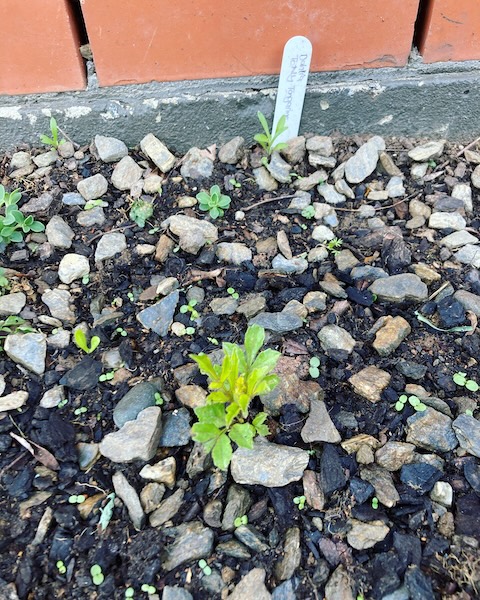
It used to be that you could plant temperature sensitive crops of all types in Dunedin at Labour weekend, which is in the third weekend of October. But for the last three years we either have had a snowfall in the last week of October, or we have a very late frost in the first week of November. As this is a death sentence for any dahlia growing in the garden, I've had to come up with a frost protection method which will work for all my dahlia plants.

Over the last couple of years I've tried frost clothing my dahlias, but this method is prone to the wind blowing the frost cloth off overnight before the frost at dawn. So I've had to resort to a more brute force method of protecting my dahlias. After many trials, I finally settled on using a lot of small, cheap buckets, placing them on top of the dahlias on risky nights, and holding them in place with a spare piece of firewood.

It's not a very pretty method, but it does the trick. It does take a lot of work though, going around each night putting buckets on dahlias, and then the next morning removing them when the temperature rises. Larger buckets are needed to protect the dahlias as they get bigger. Then there is the problem of running out of buckets if too many dahlias are above ground, and I'm not proud to admit this, but that's when I resort to raiding the kitchen cupboards for ice cream containers and mixing bowls...
I used to go around with a wheel barrow collecting up all the buckets and firewood each day, and then redepositing them each night, but now I've gotten lazy, and leave them sitting beside each dahlia all the time for easier distribution. It may make the garden ugly looking for about a month, but I can totally live with that.
The whole process is a giant pain in the ass, but it's completely worth it in summer when my garden is filled with flowering dahlias.
Have a wonderful day
Julie-Ann
Want to discuss my post? Feel free to chat with me on Instagram or Mastodon or Bluesky.
Making Citrus Frost Cloth Covers
Hello friends,
After buying a frost cloth cover from one of our local garden centres back in May, I wanted to make bigger versions for my three citrus plants before winter arrived.
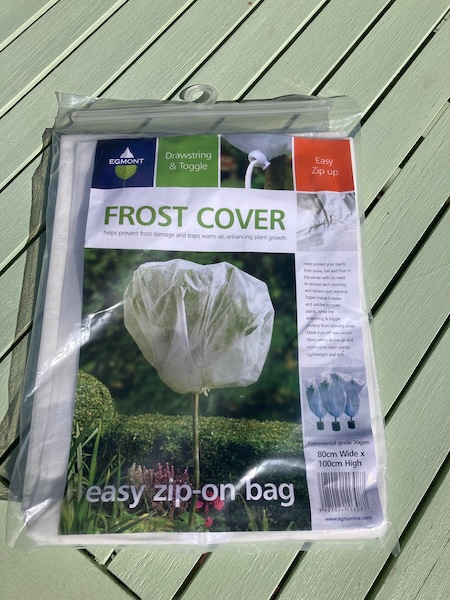
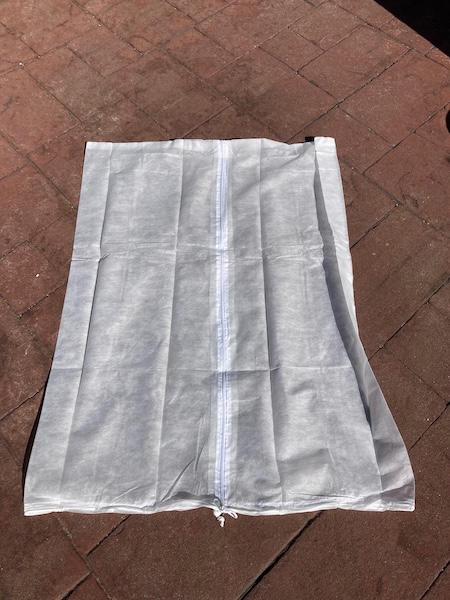
Luckily I had some very thick frost cloth in storage from last year, so I tracked it down and then got to work. The frost cloth was 2 metres wide and many metres long, so I used the width of the frost cloth as the height for each frost cover. I wrapped the frost cloth length around each citrus plant, added extra space for wiggle room to fit it over the citrus plants, and then marked it out on the frost cloth. I decided that adding a zip was just extra work, and more expensive, so I didn't bother with it.
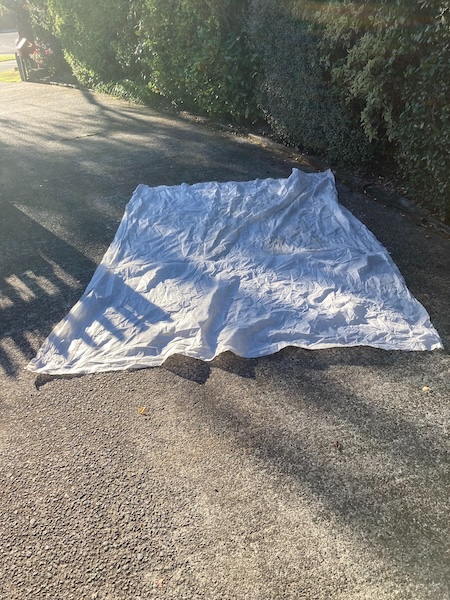
Once I had measured each plant, I went up to my craft room and cut off a length of frost cloth for each frost cloth cover. I then folded each section of frost cloth width wise, so that the width of the frost cloth formed the sides of the frost cover. The length of frost cloth that was folded in half then formed the top and bottom of the frost cover. With this done, I sowed along the top and the side of the frost cover. The bottom of the frost cover was left open for making the casing for the pull string, and to pull over the citrus plants when the frost cover was finished. I used a normal straight stitch on the sewing machine, and made sure the ends were well tacked down.
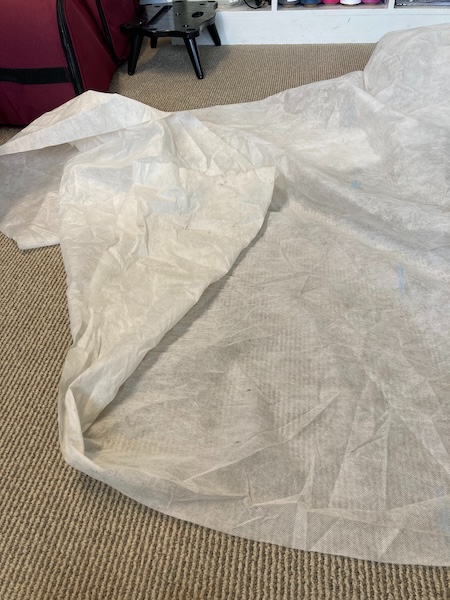

The next step was to sew a casing in the bottom of the frost cover, leaving a small opening so I could insert some nylon rope in a circle around the bottom. I purchased some general purpose nylon rope from Mitre 10, and some cord pullers from Spotlight.
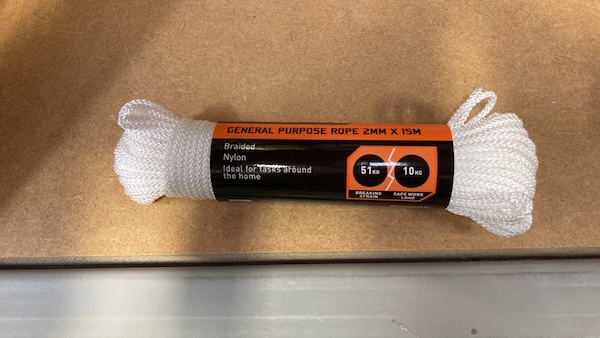
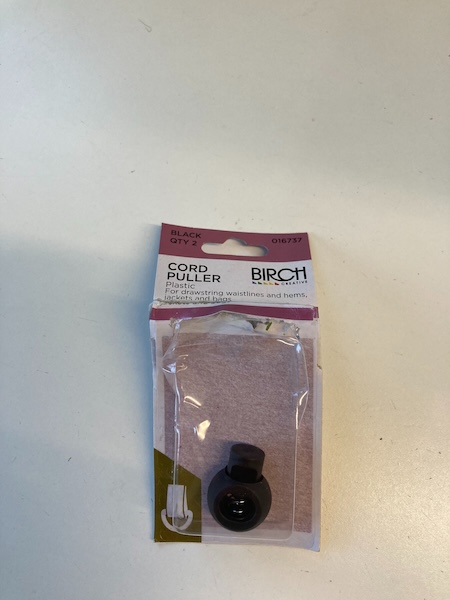
After sewing the casing, it was time to unwind the general purpose rope, and insert it into the casing. This was when Rosie cat came to assist me, and she helped me add the rope and the cord pullers to all three citrus frost covers.

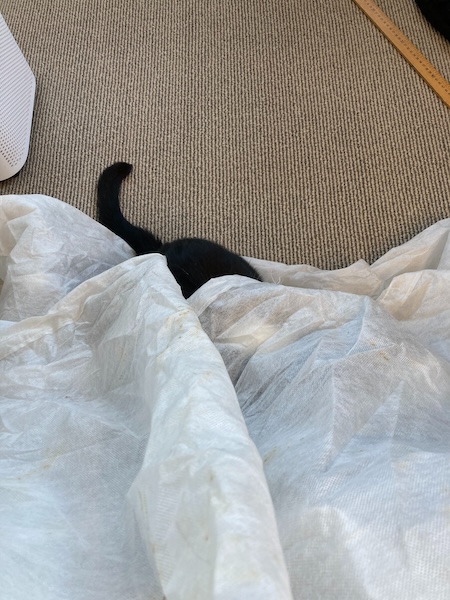
After making sure the cord pullers all worked, and tying the ends of the rope tight together, the frost covers were ready. After trying on each frost cover to the corresponding citrus plant, I labelled each one with a permanent marker.
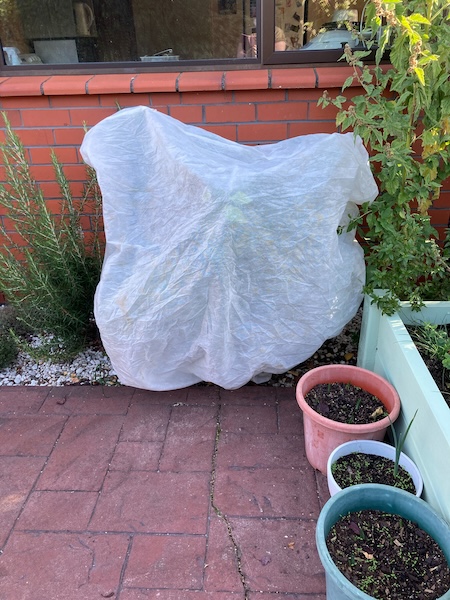
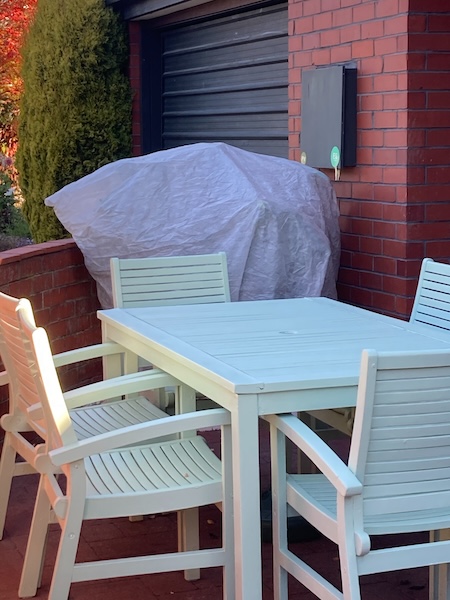
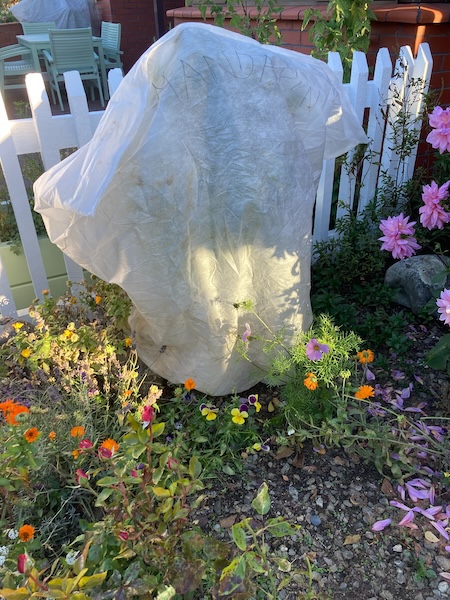
It's now winter, and we've had multiple frosts now. The frost covers have been such an asset to have, as they are so easy to pull on and off. It's really been so much easier to protect my precious citrus plants from frost and snow. And to make the frost covers myself, it was just a crafty bonus.
Have a wonderful day
Julie-Ann
Want to discuss my post? Feel free to chat with me on Instagram or Mastodon or Bluesky.
Outdoor Citrus Frost Cloth Project
Hello friends,
Sometimes it's just easier to buy stuff you need for the garden, and especially when the task you need to complete takes up a lot of time.
We were in the local garden center the other day and spied a new product on the shelves. Egmont is now selling a frost cover with a drawstring and toggle, and the frost cover is zipped on for easy placement and removal. The frost cloth is commercial grade, and the fabric is 30 gsm. I didn't buy one at the time because the bag is only 80 cm wide by 100 cm tall. The bag wouldn't be big enough to fit any of my citrus plants.
But after thinking about it over the Easter weekend, the bag would be big enough to use as a template to make larger versions that would fit my citrus plants. I went out and bought one after Easter, and it was only $10, which is a pretty good deal considering how big the zip is.
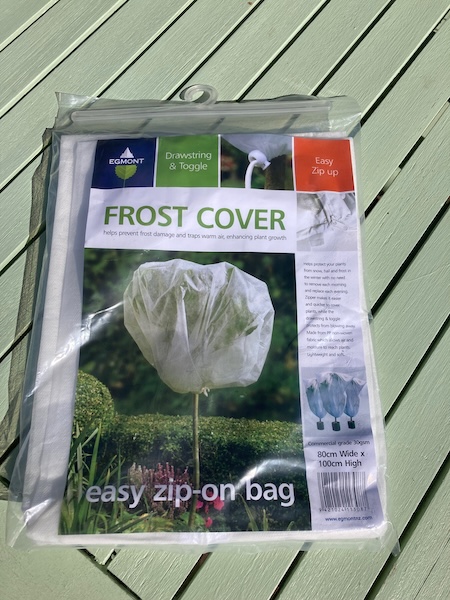
As you can see from the photos the frost cover bag is a rectangle which has been folded in two halves with a zip down the middle. The top is sewn across with a heavy seam which won't rip easily. The bottom contains a fabric casing to hold a thick cord, which is held in place by a strong toggle.

I tried placing the frost cover over the smallest citrus plant I have, which is our mandarin bush, and as you can see it is pretty squished inside the frost cover. It definitely needs more space so that the branches don't get squished. But the frost cover was pretty easy to put on, and the thick cord and the toggle did a great job of keeping the frost cover in place.
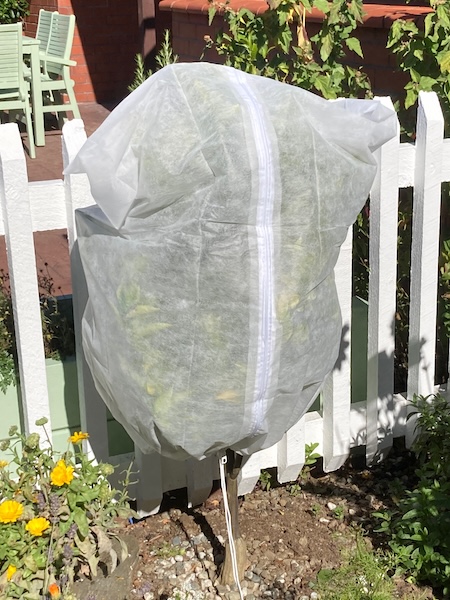
So even though I can't use this frost cover to protect my citrus plants, I can use it as a template to make bigger versions that I can use. And afterward I can use this frost cover for my small Camellia sinensis tea plant over winter, so that is a good bonus for me. In the coming weeks I'll make up the template for the citrus plants, and build a trial one for testing.
I did ask the garden center if Egmont planned on making bigger versions, but she said that this product had only just come onto market, so not likely this year. They were going to pass on my suggestion for Egmont make bigger versions in the future.
My suggestion is if you do have smaller citrus plants, that the Egmont frost cover is definitely worth buying for your plants over the coming cold season. With it being easy to take on and off, it'll save you time and protect your precious plants from any frosts that do happen.
I just need to now pull out all my current frost cloth stash and see if I have any frost cloth that can be used for making some bigger covers for my own plants.
Have a wonderful day
Julie-Ann
Want to discuss my post? Feel free to chat with me on Instagram or Mastodon or Bluesky.
Frost Proofing My Outdoor Citrus Plants With Liquid Frost Cloth
Hello friends,
Autumn is here, and the Autumn equinox has just been, and so with it comes the increased risk of frosts. The earliest frost we've had at our home since I started keeping records was on the 6th of April 2019, which is only 17 days away from today's date. All it takes is one cold front to come through, followed by a cold clear night, and a frost is possible. We've already had a low temperature of 3˚C this month, so there's definitely now a risk to my frost tender plants.

Our citrus plants outgrew their pots in spring last year, so they can no longer sit inside the glasshouse over winter for protection. I planted them in the patio in October 2023, so they now need to be protected from frosts and snow over the coming autumn and winters.
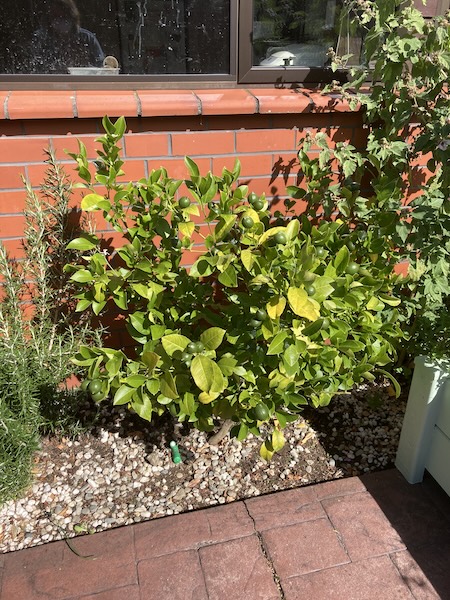
I plan to do this in a number of ways. The first one, which I've just done, is to treat all my citrus plants with liquid frost cloth, which is called Vapor Guard in NZ (you can buy this from garden centers). It protects plants down to -3˚C frosts by forming a protective wax coating over the leaves. Vapor Guard lasts about 6 weeks, as rain and frosts slowly break down the protective wax coating, and then it's time to spray Vapor Guard all over again. I keep a note of the dates I spray in my garden diary, and also calculate the next spraying day six weeks from then.

Vapor Guard does not protect the plants below -3˚C, so frost cloth is needed to protect the plants during the colder parts of the year. My plan over the next month is to build wooden frames, and then to attach frost cloth over the top. I'll then move the frames daily into position to protect the citrus plants when needed.
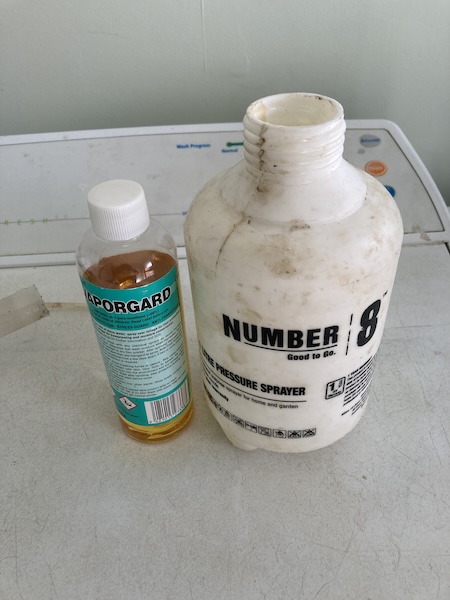
To treat the citrus plants with liquid frost cloth I added 15 mL of Vapor Guard to 1L of luke warm water. After giving it a good mix, I sprayed the liquid frost cloth onto the plant leaves on a dry and warm sunny morning with no wind. I wore gloves and a mask while doing so. The 1L of liquid frost cloth spray was enough to spray my lemon, mandarin, and lime plants, and also enough left over to protect my Camellia sinensis (tea plant) too.
My plants then had the rest of the day to dry, and for the wax to set. They're now protected from frosts for the next 6 weeks, we don't usually get heavy frosts until late May/early June, so I now have time to build the protective frost cloth cages.
I'm relieved to have done this, as the last week has been quite rainy, which meant I couldn't get a window to get this garden job done.
There will be no blog post next week, as hubby and I are having a much needed staycation between Otago Anniversary Day and Easter. Well be relaxing and eating hot cross buns and chocolate, and I hope to make strawberry and raspberry jam as well. I'll post again in early April.
Have a wonderful day
Julie-Ann
Want to discuss my post? Feel free to chat with me on Instagram or Mastodon or Bluesky.




